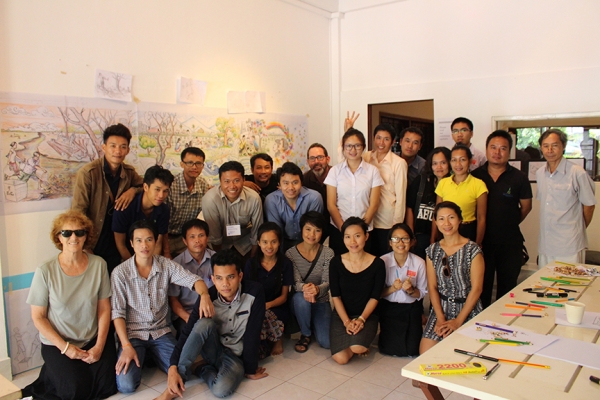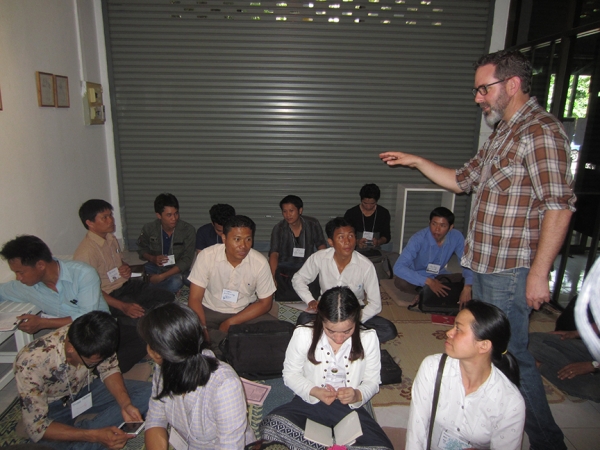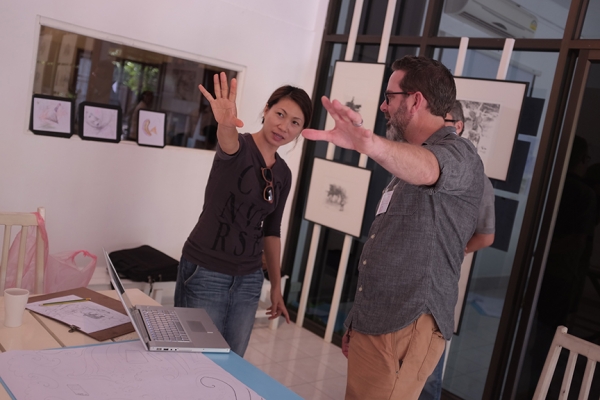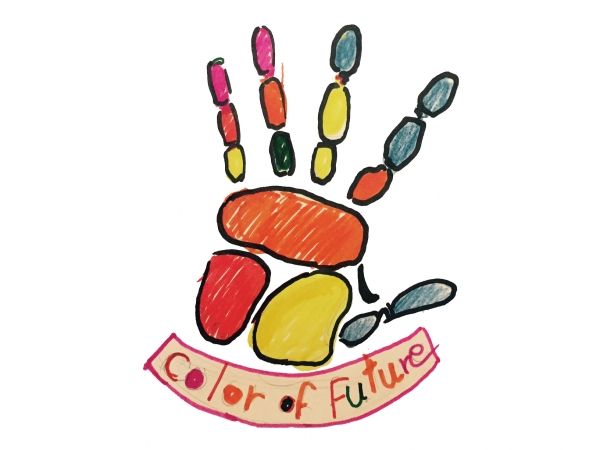I have been in Vientiane for seven days. These days were packed with workshops and meetings with Lao artists, and youth and environmental groups where we made art, shared our dreams, and discussed ways to improve the environment.

This city is virtually devoid of public art. The few murals that do exist are either propaganda for the Lao PDR Government or small murals painted by foreigners who work with a private business. In Oakland where I live, we are in the midst of a street art renaissance where new murals are popping up almost on a weekly basis. It’s a beautiful thing. Here in Laos, there is virtually nothing. The idea of creating a painting to be displayed in public outside of a gallery or museum is hard for local artists to fathom. Established artists use assistants as cheap labor here all of the time, but the act of artists working collaboratively to produce an artwork that honors the voices and skills of each artist is also very new.
Twenty professors and students from the National Institute of Fine Arts showed up for the workshops each day this week, during which I walked them through each step of creating a collaborative mural. Under my guidance, this group created the concept, developed sketches, and produced a fully realized design in only three days! They will spend the next two weeks painting the mural together on a public wall in the middle of the city.

During the workshop, we discussed the environment and the issues that most concerned the Lao people. The artists started by creating their own individual drawings that illustrated the issue that resonated with them the most. We placed the drawings on the wall and began to talk about the similarities between the images and the ideas. The accumulation of trash and plastic around the city was recurring theme in many of the drawings. Some of the artists illustrated the problem of people dumping trash into the river while others offered solutions with images of people picking up trash and planting trees. A few artists dreamed about what the future might look like if everyone worked together to help change the habits of the people and make the environment more of a priority. This became our concept for the mural: identify the problem, illustrate the solutions, and show the dream for the future. We had our idea.

The artists broke into teams to create the scenes of the mural. In less than eight hours over two days the artists worked together to create a ten-foot full color sketch of what the mural would look like – keeping in mind that Lao artists do not normally collaborate together like this. The teaching and the art practice here is very formal and traditional. All artists are gifted in the technical aspects of drawing and design, but are not encouraged to expand beyond traditional formats.
The energy and excitement increased with each day as they worked toward finishing the design. It was like watching a dance where one artist would begin drawing a figure, another would step in and add the detail, and another would twirl in to add the splashes color.

On the final day, the artists at the workshop formed a mural collective with the vision to start a mural program at National Institute of Laos Fine Arts. We brainstormed names and had a logo design contest to vote on our favorite ideas. The mural collective, “Color of Future,” was born. By venturing into uncharted public arts strategies and breaking from traditional arts practices, this collaborative group of Lao youth and professors will soon unveil a creative resolution to raising awareness about environmental issues and plastics to carry outwards to their communities, elders, and future generations. They will spend the next two weeks painting the mural on a public wall in the middle of the city.


